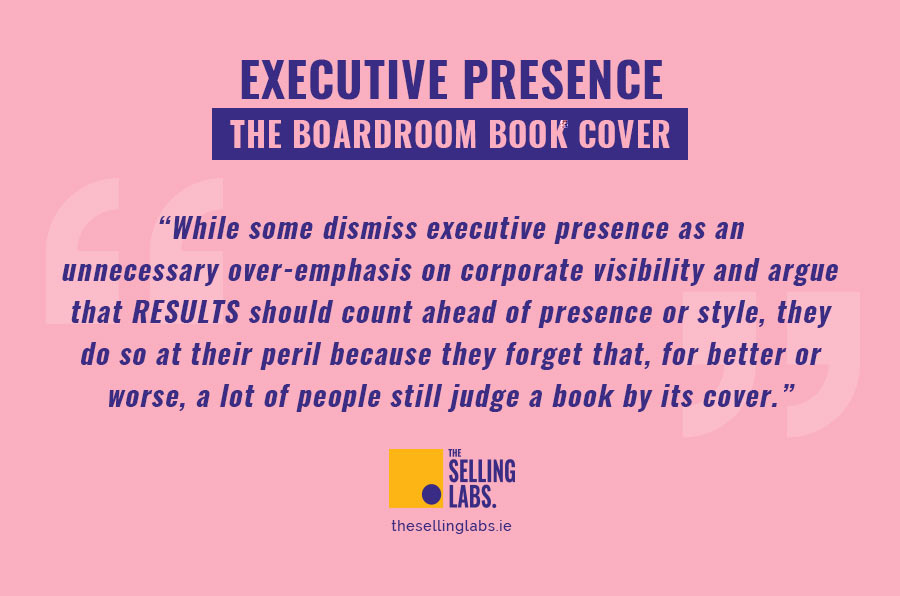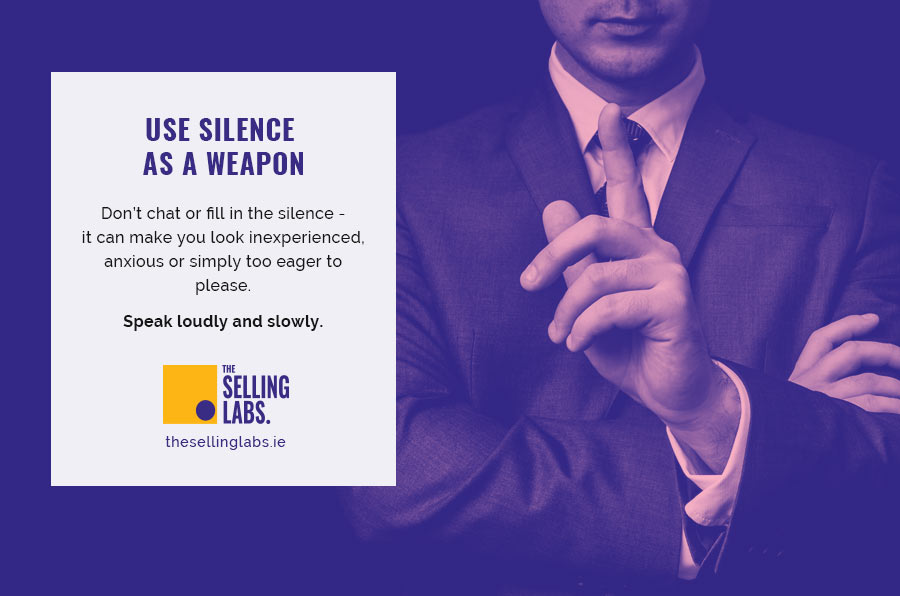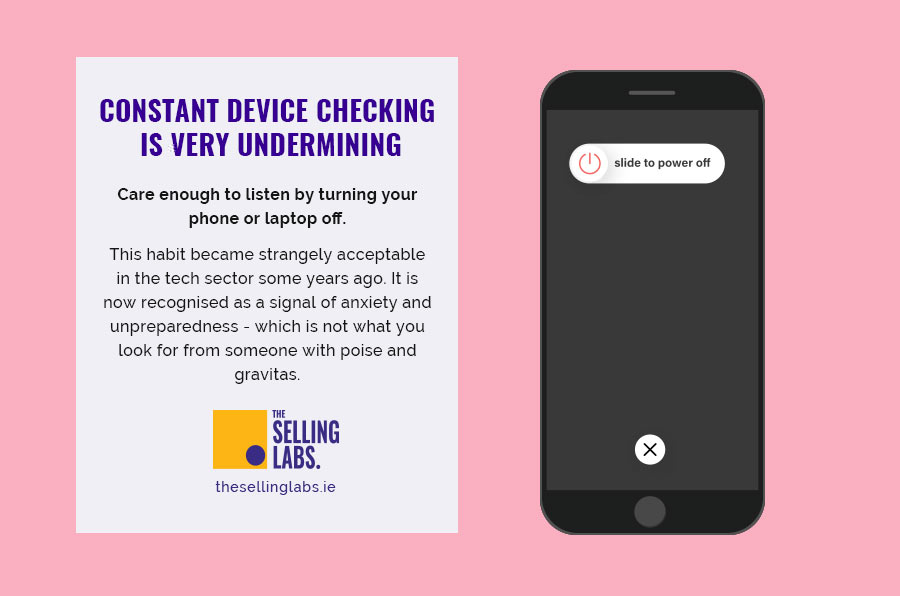Recently, we were delivering an executive communication coaching session to a collection of sales leaders who were, as usual, video-ing in from their homes. It was an interesting discussion where lots of issues were discussed and many fresh ideas were presented. All the participants were actively involved in the discussion but, strangely, one in particular stood out. But it wasn’t because he was any better or worse than anyone else in the session or that his contributions were any more or any less enlightening.
No, it was because throughout the call, he was smoking!
No-one would’ve batted an eyelid about this behaviour twenty five years ago but things have changed a lot since then. Nowadays a social faux pas like smoking or any other ‘frowned at’ behaviour scores pretty low on the rating scale and can influence one person’s opinion of another person’s character. Indeed, the ‘smoking incident’ got us thinking about the whole concept of executive presence, that combination of “confidence, poise, and authenticity, that convinces the rest of us we’re in the presence of someone who’s the real deal” – from Centre for Talent Innovation.

Executive Presence – The Boardroom Book Cover
While some dismiss executive presence as an unnecessary over-emphasis on corporate visibility and argue that results should count ahead of presence or style, they do so at their peril because they forget that, for better or worse, a lot of people still judge a book by its cover.
Indeed, in our experience of coaching individuals and facilitating groups, we’ve found that those who pay attention to style and impact are more likely to be noticed and, more often than not, are the first to be promoted or the ones that land the most exciting projects. Leaders who underestimate the detrimental effect that poor executive presence has on performance are, thus, doing themselves a disservice.
The Sales Process and EP
Research has shown that executive presence is vitally important in the sales process as it signals one’s preparedness to grasp an opportunity. Of course, knowledge and competency are crucial tools in any professional career but the way others experience you as a person can often be the factor that sways a final decision. There are four elements to achieving executive presence that together ensure the gravitas and emotional intelligence of leadership.
- Good Communication: is the way in; without this people stop listening. Once leaders know how to communicate properly they have acquired a precious instrument in the leadership toolbox.
- Gravitas: that powerful mix of confidence, poise and credibility makes others look up and take note. Gravitas is essential in being leader-like.
- Appearance: cultures vary on this topic but most people agree that looking the part and paying attention to aesthetics will get you noticed, in the right way.
- Character: reputation, integrity and emotional balance influence everything a leader does.
The 8 Tips To Great Executive Presence
With the above in mind, we have gathered a series of simple tips and tricks that, with determination and commitment, can improve your executive presence:
1. Leave Your Notes at Home: Whether you’re in a 1-1 or a large group, you need to demonstrate you are senior enough to deliver a polished performance without props. Reading or referring to prompts while speaking makes you look rehearsed and stilted.
2. Think About what the Audience Cares About: Put yourself in the mind of a member of your target audience. What do you want that person to think, feel?
3. Use Silence as a Weapon: don’t chat or fill in the silence – it can make you look inexperienced, anxious or simply too eager to please. Speak loudly and slowly.

4. Use Personal Stories: As Maya Angelou once said: “People will forget what you said, people will forget what you did, but people will never forget how you made them feel.” Bring light humour into your presentations, add anecdotes and analogies that connect with people and make it easier for them to connect with you.
5. Vulnerability: Some leaders can develop a good presence by taking this one step further and reveal vulnerability. Sheryl Sandberg does this well. In her Berkeley alumni keynote address, she made an impact with a strong message about learning from adversity and used the loss of her husband as an example. However tread carefully as over-telling a story can sometimes distract listeners from the point you are trying to make.
6. Constant Device Checking is Very Undermining. Care enough to listen by turning your phone or laptop off. This habit became strangely acceptable in the tech sector some years ago. It is now recognised as a signal of anxiety and unpreparedness – which is not what you look for from someone with poise and gravitas.

7. Lead With Trust: If gravitas is a key component of executive presence, credibility is essential. Do what you say you will do, and admit your mistakes. Fulfil promises, maintain reliability, be accountable. Share information in a transparent fashion.
8. Appearance is the First Filter: Grooming and polish are important and casual cultures can be tricky. Play it safe by sticking to classic business casual unless you know the environment very well.
It’s not enough any longer to bring experience and qualifications to the leadership table. It requires that added secret sauce of character, communication, gravitas and aesthetics.
Once you have these, then the world is your oyster.
The Importance of Coaching for Executive Presence
The challenge in building these elements of executive presence is two-fold: firstly soft skills are developed early in life and by the time you’re in a management role habits can be ingrained and hard to change. And secondly, even with the best will in the world to change, we can be blind to how we come across. That’s where coaching can help.
Coaching is a useful intervention to see yourself through the ‘blind window’- the view of you that others can see but you can’t. Using role-play, video and coaching techniques like the ‘empty chair’, where you ‘sit opposite’ your weakness and attempt to diminish it by interrogating it, coaching can root out the stubborn ingrained patterns that stand in the way of our development areas. Thus in the private sanctuary of the coaching room, progress can be made.
To see how your business or sales team can benefit from our executive presence coaching then get in touch with us today for more info.
Two pieces of research launched within a year of each laid the foundations for executive presence. In 2013, BTS Boston researched the topic and in 2014 the Center for Talent Innovation published Executive Presence: The Missing Link Between Merit and Success.
On Expert Sales Tips
Get regular updates delivered straight to your inbox with expert sales tips for tech & SaaS companies. Enter your email below and start to increase your sales now.



